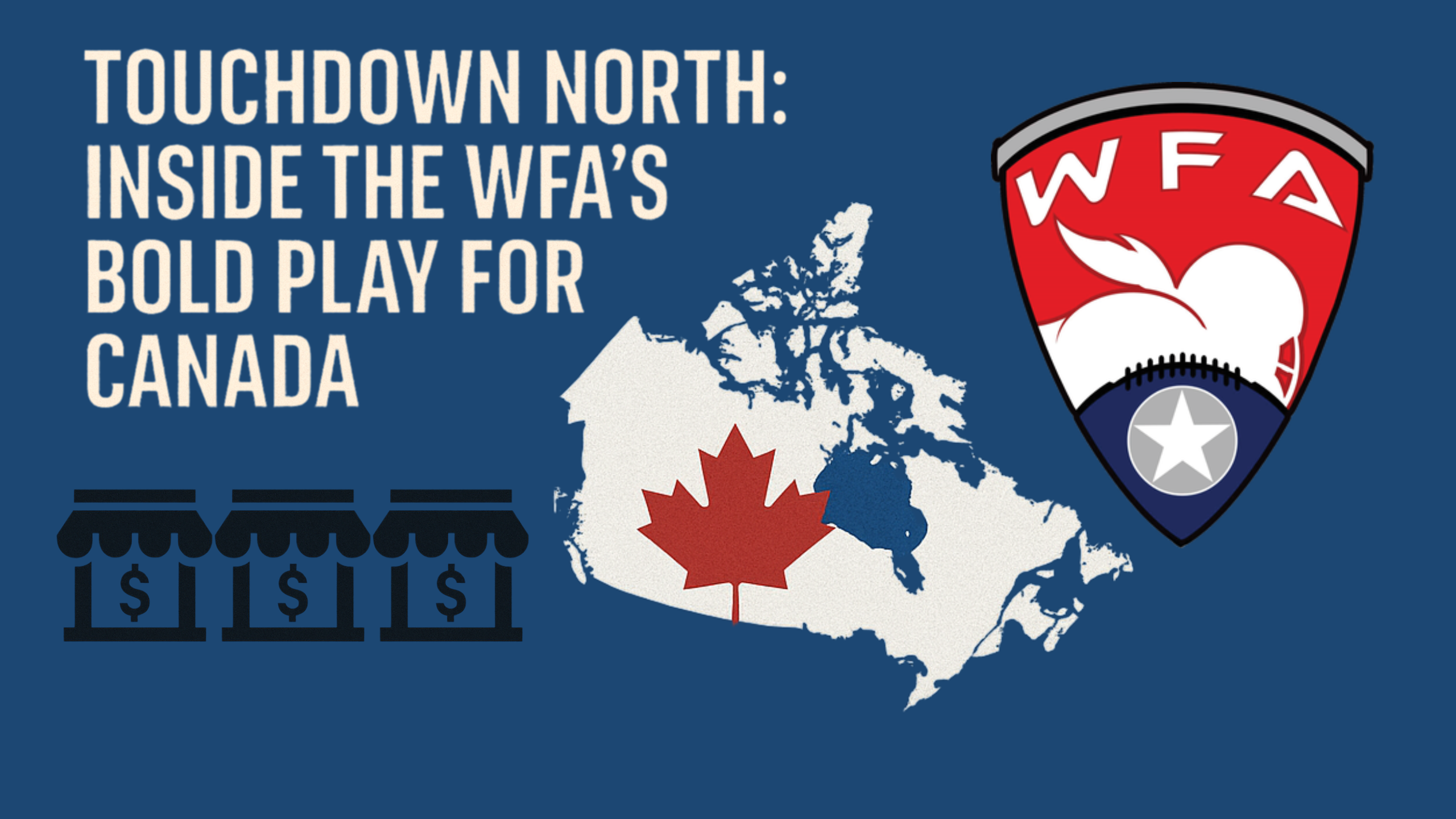
Canton, Ohio —The Women’s Football Alliance is eyeing Canada not just as a new market, but as the proving ground for a new era of women’s professional football. With an ambitious shift to a franchise-based model and a strategic partnership with Canadian sports operators, the WFA is embarking on a cross-border expansion that could reshape the women’s sports landscape in North America. Behind the carefully worded press releases lies a high-stakes effort to scale one of the most underrepresented forms of professional team sports—women’s tackle football. If successful, the effort would not only bring elite women’s football to Canadian cities but redefine the infrastructure around how the sport is governed, marketed, and sustained.
The decision to adopt a franchise model was formalized in June 2025, marking a pivotal turning point for the league. For years, the WFA operated with an open-team model, where independent ownership groups formed and managed teams with variable levels of support and oversight. This model provided flexibility but limited the league’s ability to enforce standards or scale efficiently. Now, the WFA has moved to a centralized structure with territorial rights, shared resources, and a league-wide operational framework. According to Commissioner Lisa King, the redesign was meant to provide “long-term success for owners and communities alike.” That includes not only financial backing and logistical guidance but also brand alignment and media visibility. A crucial component of this effort is the league’s expansion into Canada—an ambitious leap across borders that is being piloted in partnership with Cosmos Sports & Entertainment, a firm based in Ontario with a long history of working alongside Canadian sports leagues like the CFL and CEBL. Cary Kaplan, president of Cosmos, has emerged as a vocal advocate for the project, leading an aggressive 90-day campaign to recruit local ownership groups. The goal is to identify six viable franchise candidates by the end of 2025. While large metro areas like Toronto and Vancouver are obvious contenders, early outreach has focused heavily on Alberta, including Lethbridge, Calgary, Edmonton, and Red Deer. “We’re less driven by the market and more driven by the ownership group,” Kaplan told regional media outlets. The pitch is clear: local investors who understand the sport and are embedded in their communities will be key to long-term sustainability. The WFA is not looking for short-term hype; it’s building a permanent presence, and it’s betting that mid-sized Canadian cities, many with rich football cultures, can carry the weight.
The league’s leadership is not blind to the risks. This is not the first time Canada has intersected with the WFA. In 2016, the Montreal Blitz, one of the most accomplished women’s teams in North America, joined the league. But their tenure was short-lived. Within a year, the Blitz withdrew from the WFA, citing travel restrictions, uneven scheduling, and lack of structural support. They have since returned to Canadian competition through the CCWFL, but their exit from the WFA remains a cautionary tale. In conversations surrounding the current expansion, league officials repeatedly reference the Blitz experience as a lesson in what not to repeat. The current strategy emphasizes travel coordination, standardized scheduling, and a fully resourced operational model for all franchises, particularly international ones. One major concern for Canadian teams is where games will be played. In Lethbridge, the VisitLethbridge.com Centre has emerged as a candidate venue, offering modern turf and scalable capacity. Calgary’s McMahon Stadium is also on the table, though its status as a multi-sport venue, home to the CFL’s Stampeders, presents complications in terms of availability and cost. In the league’s recruitment materials, potential owners are encouraged to establish partnerships with universities or municipalities to secure regular and affordable access to competitive fields. The infrastructure question is more than academic; it could determine the financial feasibility of these teams.
What separates this push from previous expansions is the WFA’s media muscle. The league already has broadcasting deals in place with ESPN and AWSN, providing immediate visibility for any new franchise. This strategic advantage positions the WFA well in a competitive Canadian sports market that has recently seen rapid expansion in women’s leagues. The Northern Super League, a women’s professional soccer league, launched earlier this year with six teams, national coverage, and corporate backing. Meanwhile, the WNBA’s plans for a Toronto-based franchise continue to generate national buzz. For the WFA, media exposure is no longer a hope—it’s a guarantee, and one that could catalyze rapid fan adoption. With franchise announcements projected by late 2025 and the inaugural Canadian season scheduled for spring 2026, the clock is already ticking. Behind the scenes, Cosmos is fielding ownership proposals, drafting operational templates, and vetting community partners. This is not a grassroots experiment—it is a top-down expansion effort backed by commercial partners, media networks, and a governing body with a unified vision. The question, then, is not whether the WFA can enter Canada, but whether it can stay. Success will depend on converting early interest into committed ownership, transforming media attention into local fan bases, and overcoming logistical barriers with meticulous planning. The road ahead is far from simple. But if the league gets it right, it won’t just be planting flags in a new country—it’ll be writing a new playbook for professional women’s football.
Jonathan Brown started SPCSN in 2018 as a sports highlight company and started with doing videos for friends and teammates at his Alma Mater Johnson University Florida. As he progressed as an athlete and sports broadcaster in college, he began to see a need for many small colleges and semi-professional teams. He became fascinated with local team markets and wanted to show the whole world what these teams showed. In 2019, Brown transitioned his business into a sports network focused on non-NCAA DI schools, semi-professional sports, and select minor/development leagues. Brown currently serves as the CEO and chairman of the board.










